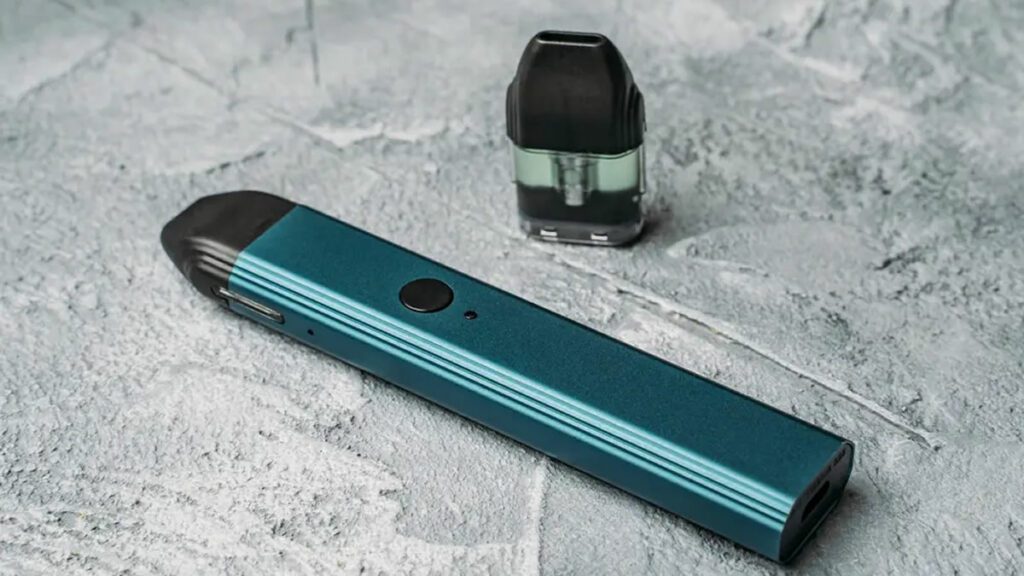The world of vaping offers a vast spectrum of experiences, from discreet, flavor-focused puffs to voluminous, dense clouds. At the heart of this diversity lies the e-liquid, the very essence that, when vaporized, creates the sensation and satisfaction vapers seek. While flavors and nicotine strength often take center stage in a user's selection process, a more fundamental yet equally crucial aspect is the ratio of its base ingredients: Propylene Glycol (PG) and Vegetable Glycerin (VG). Understanding the distinct properties of PG and VG, and how their balance in an e-liquid (the PG/VG ratio) impacts everything from throat hit and flavor intensity to vapor production and device compatibility, is essential for an optimal and trouble-free vaping journey. This guide will delve into the concrete foundations of e-liquids, demystifying PG and VG to empower you to make the best choices for your preferences and equipment.
The Core Duo: Understanding Propylene Glycol (PG) and Vegetable Glycerin (VG)
Nearly all e-liquids, regardless of flavor or nicotine content, are built upon a base mixture of two primary ingredients: Propylene Glycol (PG) and Vegetable Glycerin (VG). These are transparent, viscous liquids that are widely utilized across various industries, including food, pharmaceuticals, and cosmetics, and are generally recognized as safe for ingestion by regulatory bodies worldwide.
Propylene Glycol (PG): The Flavor Carrier and Throat Hit Provider
Propylene Glycol is a synthetic organic compound that is virtually odorless and colorless, with a slightly sweet taste, though less so than VG. In the context of e-liquids, PG plays several vital roles:
- Efficient Flavor Carrier: PG is less viscous (thinner) than VG, which allows it to dissolve and carry flavor concentrates more effectively. This generally results in a sharper, more defined, and intense flavor profile in the vapor.
- Provides "Throat Hit": For many former smokers transitioning to vaping, the sensation at the back of the throat upon inhalation – known as the "throat hit" – is a crucial part of the experience. PG is primarily responsible for delivering this sensation, which can mimic the feeling of inhaling tobacco smoke. A higher PG ratio typically means a stronger throat hit.
- Lower Residue: Due to its thinner consistency, PG tends to leave less residue or "gunk" on the heating coil compared to VG, potentially leading to slightly longer coil life in some instances.
- Faster Wicking: Its lower viscosity allows PG-dominant e-liquids to saturate the wicking material in the atomizer coil more quickly and efficiently, which is particularly beneficial for lower-power devices or those with smaller wicking channels.
However, some individuals may find high PG concentrations slightly irritating to the throat. Also, because it produces less dense vapor, it's not the preferred base for vapers prioritizing cloud production.
Vegetable Glycerin (VG): The Vapor Powerhouse
Vegetable Glycerin, often referred to as glycerol, is a natural chemical derived from vegetable oils (such as soybean, palm, or coconut oil). It is a clear, odorless, and very viscous (thick) liquid with a distinctly sweet taste. In e-liquids, VG's primary contributions are:
- Abundant Vapor Production: VG is the star ingredient for vapers who enjoy producing large, dense, and opaque clouds of vapor. The higher the VG content in an e-liquid, the more substantial the vapor production will be.
- Smoother Inhale: VG provides a much smoother sensation on the throat compared to PG. High VG e-liquids are often preferred by those who find PG too harsh or who engage in Direct-to-Lung (DTL) vaping where large volumes of vapor are inhaled.
- Inherent Sweetness: VG's natural sweetness can contribute to the overall flavor profile of an e-liquid, sometimes enhancing sweet or dessert notes, though it can also slightly "dampen" or mute more delicate flavor nuances compared to PG.
The main considerations with high VG liquids are their thickness, which requires more powerful devices with larger coil wicking ports to vaporize effectively, and their tendency to build up residue on coils more quickly than PG, potentially shortening coil lifespan if not managed well.
The PG/VG Ratio: Decoding the Numbers for Your Ideal Vape
E-liquids are rarely made with 100% PG or 100% VG (though such options exist for specific DIY purposes). Instead, they are formulated with varying ratios of these two base ingredients to achieve different vaping characteristics. This PG/VG ratio is not merely a technical detail; it's a fundamental parameter that structures the entire inhalation experience, influencing flavor, throat hit, vapor volume, and, critically, compatibility with different types of vaping equipment. Common ratios you'll encounter include:
- 50PG/50VG: This is often considered the "classic" or most balanced ratio. It aims to provide a good equilibrium between flavor intensity, throat hit, and vapor production. Its moderate viscosity makes it highly versatile and compatible with a wide range of devices, especially beginner kits, pod systems, and Mouth-to-Lung (MTL) clearomizers.
- 70VG/30PG (or higher VG, e.g., 80VG/20PG, "Max VG"): These are known as "High VG" e-liquids. The predominance of vegetable glycerin results in significantly denser, larger vapor clouds and a much smoother, milder throat hit. These thicker liquids are best suited for higher-power devices, particularly sub-ohm tanks and rebuildable atomizers designed for Direct-to-Lung (DTL) vaping, which have larger wicking channels to accommodate the viscosity.
- High PG (e.g., 60PG/40VG, 70PG/30PG): While less common in pre-mixed retail e-liquids today (especially shortfills), higher PG ratios prioritize flavor clarity and a stronger throat hit over vapor volume. These thinner liquids are well-suited for very low-power pod systems or older-style clearomizers with small coils.
Specialized vaping platforms systematically indicate the PG/VG ratio in their product descriptions. This is a crucial technical reference that allows consumers to match their e-liquid choice to their specific hardware and desired vaping style without guesswork.
How the PG/VG Ratio Influences Your Vaping Experience and Device
The choice of PG/VG ratio is not arbitrary; it directly impacts several key aspects of your vape and how your device performs.
Sensation and Throat Hit:
As discussed, higher PG levels deliver a more pronounced throat hit, which many ex-smokers seek. Higher VG levels create a smoother, softer sensation on the inhale, which is often preferred for DTL vaping or by those sensitive to PG.
Flavor Intensity vs. Vapor Volume:
PG is a better flavor carrier, so higher PG e-liquids often provide a sharper, more intense flavor. VG, while producing more vapor, can sometimes slightly mute the nuances of certain flavors due to its own sweetness and thickness. The choice here depends on whether your priority is crisp flavor or voluminous clouds.
Device Compatibility and Coil Health:
This is a critical consideration. Using an e-liquid with an inappropriate PG/VG ratio for your device can lead to a poor experience and even damage your hardware:
- Using High VG in Low-Power/MTL Devices: A thick, high VG e-liquid (e.g., 70VG/30PG or higher) in a small pod system or MTL clearomizer with small coil wicking holes can result in poor wicking. The cotton cannot absorb the thick liquid fast enough, leading to "dry hits" (inhaling the taste of burnt cotton), which are unpleasant and will quickly ruin your coil. It can also lead to leaks if the coil struggles to vaporize the thick liquid efficiently.
- Using High PG in High-Power/DTL Devices: A thin, high PG e-liquid in a powerful sub-ohm tank designed for DTL vaping can lead to an overly harsh and irritating throat hit due to the large volume of vapor being inhaled. The thinness of the liquid can also cause leaking through the larger airflow channels and wicking ports of DTL atomizers.
Beyond just the immediate sensation, the PG/VG ratio also influences the lifespan of your coil (atomizer head). Thicker, sweeter high VG liquids tend to gunk up coils faster than thinner, high PG liquids, necessitating more frequent coil changes. The speed of wick impregnation and overall user comfort, especially depending on the frequency of vaping, are also affected.
Choosing Your PG/VG Ratio: Matching Liquid to Equipment and Vaping Style
The ideal PG/VG ratio is a personal choice but should always be guided by the type of vaping device you use and your preferred inhalation method (MTL or DTL).
- For Beginners and Mouth-to-Lung (MTL) Vapers: If you are new to vaping or prefer an MTL draw (similar to smoking a cigarette, where you draw vapor into your mouth first, then inhale into your lungs), a **50PG/50VG** ratio is generally the best starting point. This offers a good balance, works well in most starter kits and pod systems, limits the risk of coil clogging, and ensures the coil is correctly powered even on lower-wattage devices.
- For Cloud Chasers and Direct-to-Lung (DTL) Vapers: If you enjoy producing large vapor clouds and use more powerful devices (sub-ohm mods and tanks, rebuildable atomizers) with a DTL inhale (drawing vapor directly into your lungs), then **High VG liquids (70VG/30PG, 80VG/20PG, or even Max VG)** are your go-to. These devices are designed with generous airflow and larger coil wicking capabilities to handle the thicker base effectively.
- For Flavor Purists with Low-Power Devices: Some vapers using very discreet, low-power pod systems who prioritize intense flavor over vapor might opt for slightly higher PG ratios if available (e.g., 60PG/40VG), but 50/50 remains a very popular and versatile choice even here.
Always check the manufacturer's recommendations for your specific device or tank regarding suitable PG/VG ratios. Most product descriptions for hardware will provide this guidance.
Regulatory Context: Ensuring E-Liquid Safety (Example: France 2025)
The safety and composition of e-liquids are subject to regulation in many countries. In France, for example, as of 2025, the sale of e-liquids is governed by strict rules, largely stemming from the European Tobacco Products Directive (TPD) and reinforced by national legislation. These regulations aim to ensure a high level of product safety and consumer protection. Key requirements include:
- Mandatory Labeling: E-liquid packaging must clearly display the nicotine level (if any), a full list of ingredients (including PG and VG percentages), specific health warnings, a batch number for traceability, and the identity and contact details of the manufacturer or importer.
- Product Notification: Manufacturers must provide in-depth toxicological data for their ingredients and notify each nicotine-containing liquid to the relevant health authorities (e.g., via a centralized European register like EU-CEG) before it can be legally marketed.
- Ingredient Restrictions: Certain additives may be prohibited.
- Enforcement: Bodies like the DGCCRF (General Directorate for Competition Policy, Consumer Affairs and Fraud Control) in France monitor compliance with these obligations, helping to limit the circulation of non-compliant or counterfeit products from unregulated channels.
Purchasing e-liquids from reputable, specialized vape retailers (both online and brick-and-mortar) who adhere to these regulations is the safest approach. These vendors typically provide detailed technical data sheets for their products, clearly display TPD/TRPR compliance, and often collaborate with approved laboratories, guaranteeing users access to verifiable information for making informed and safe choices.
Conclusion: Mastering PG/VG for an Enhanced Vaping Experience
Understanding the fundamental roles of Propylene Glycol and Vegetable Glycerin, and the significance of their ratio in your e-liquid, is more than just a technical exercise. It's key to unlocking a truly personalized and satisfying vaping experience. The PG/VG balance directly influences the flavor delivery, throat hit, vapor volume, and, crucially, the compatibility of the liquid with your specific vaping hardware. By taking the time to learn what your e-liquid contains and how it interacts with your device, you not only enhance your daily vape but also contribute to the longevity of your equipment and ensure you are vaping in compliance with relevant safety and regulatory standards. A little knowledge in this area goes a long way towards a better, safer, and more enjoyable user experience.








